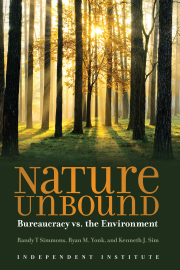On July 18,1989 Kenyan President Daniel arap Moi set fire to a 12-ton pyre of elephant tusks valued at nearly $3 million. The tusks had been confiscated from poachers and were burned to demonstrate Kenya’s dedication to saving the African elephant by ending trade in ivory. Although hunting elephants has been illegal in Kenya for over a decade, the country’s elephant population had fallen from 65,000 in 1979 to 19,000 in l989, a tragedy that Kenyan wildlife experts blame on poaching for the overseas ivory market.
In Harare, Zimbabwe, by contrast, shops openly sell ivory and hides from elephants culled to prevent rapid population growth in the country’s game parks. Part of the proceeds of these sales returns to the game parks. Similarly, two dozen peasant villages in Zimbabwe will earn $5 million next year from the sale of elephant-hunting rights on their communal lands to safari operators. The government of Robert Mugabe sees no contradiction between the protection of elephants and the carefully regulated sale of elephant products. On the contrary, Zimbabwe has found that the best way to protect elephants is to give its citizens the opportunity to benefit from their presence. The result: the elephant population has grown from 30,000 to 43,000 over the past ten years. In neighboring Botswana, where limited hunting is practiced, the elephant population grew from 20,000 to 51,000 in the same period.
There are two conflicting approaches to elephant conservation in Africa today. Kenya’s ban on hunting and efforts to suppress the ivory trade are typical of most of Central And East Africa, and the results have been disastrous. From 1979 to 1989, Central Africa’s elephant population dropped from 497,400 to 274,800 and East Africa’s from 546,650 to 154,720. Elephants in the game parks were only slightly better protected than those outside. In East Africa’s parks, for example, 56 percent of the elephants were killed or died in the past ten years. Outside the parks 78 percent disappeared. Some projections show elephants could be extinct in East and Central Africa as early as 2005.
The elephant populations of Zimbabwe, Botswana, Namibia and South Africa, however, are increasing, and now account for 20 percent of the continent’s elephants. These Southern African countries all support conservation through utilization, allowing safari hunting and tourism on private, state and communal lands, and the sale of ivory and hides. The sale of hunting rights and elephant products gives Southern Africans an economic stake in elephant conservation. It also helps finance strict enforcement of poaching laws. South Africa’s Kruger National Park, for example, earned $2.5 million last year, 10 percent of its annual budget, by selling ivory and hides from 350 elephants culled for ecological reasons to prevent overpopulation. (Without culling, elephant populations will increase at a rate of 5 percent a year). Similar ecologically-based culling programs and sales have been conducted in Zimbabwe for years and will commence in Botswana next year.
A Total Ban
Unfortunately, Kenya’s approach to wildlife conservation is dominating international efforts to save the African elephant. A report issued this June by the Ivory Trade Review Group (lTRG), an international study group funded primarily by Wildlife Conservation International and World Wildlife Fund (US.), concluded: “It is the ivory trade and hunting for ivory, and not habitat loss or human population increase, that is responsible for the decline in (African] elephant numbers.”
Upon release of the lTRG report, Kenya, Tanzania and international conservation groups called for an immediate worldwide ban on the ivory trade. The United States and the European Community responded with a ban on ivory imports. Japan and Hong Kong, the destinations of most raw ivory, instituted some controls as well. In addition, Kenya and Tanzania requested the secretariat of the Convention on International Trade in Endangered Species of Wild Flora and Fauna (CITES) to list the African elephant on Appendix I. An Appendix I listing would ban all trade in elephant products, including hides as well as ivory.
The African elephant currently is listed on Appendix II, which allows some trade in ivory and hide. Permits are allocated under a quota system administered by CITES. The quotas are based on the exporting countries’ estimates of a sustainable yield.
Boots and Piano Keys
Elephant ivory has been prized for centuries and is now especially valued in the Far East. Ivory is made into piano keys and carved into chess pieces, decorative figures and the Oriental signature stamps known as “chops.” Uncarved tusks like the ones burned in Kenya sold for $2.50 a pound in 1969 jumped to a price of $34 in 1978 and now fetch over $90. Since an average elephant’s tusks weigh 22 pounds, the value of each elephant’s ivory is $2,000 today. The hide is worth at least as much as the ivory and is made into boots, wallets and other leather goods.
Even if income from poaching were not available, however, many rural Africans would have a powerful incentive to kill elephants. Unlike the Asian elephant, which has been domesticated as a beast of burden and is therefore considered a valued treasure in many Indian communities, the African elephant competes for scarce resources, and frequently destroys human property. As Norman Myers put it in 1981 as he was leaving Kenya after working ten years as a wildlife ecologist for international conservation Organizations:
Wildlife in Africa Is being elbowed out of living space by millions of digging hoes—a far greater threat than the poachers’ poisoned arrows. When zebras chomp up livestock’s grass, when elephants drink dry savannah land water supplies, when buffalo herds trample maize crops and when lions carry off prize steers, the animals must go—unless they can pay their way. East and Central African policies do not allow elephants to pay their way, except through tourism.
Tourism does generate income, but not for rural Africa’s expanding agricultural population. In countries such as Kenya and Tanzania, where over 80 percent of the people live off agriculture, and human populations are rising at 3 to 4 percent per year, few families are willing to endure hunger so an elephant can live to provide a job for an urban–based guide or a photo opportunity for a foreign tourist.
The simple reality is that elephants compete with people for scarce resources, and rural Africans must benefit if conservation is to be successful. The ITRG argument that the decline in elephant numbers is not due to “habitat loss or human population increase” ignores this reality and the incentive it creates for people to engage in poaching or simply to kill off local elephants.
Elephants are not even safe from such human pressures in the parks or wildlife reserves. Rural Africans who want land see a local park as a zoo catering to rich foreigners and resent it greatly. The Serengeti Park in Tanzania, for example, is embroiled in a three–way conflict between wildlife managers, subsistence farmers who want land for crops, and the nomadic Masai cattle herders who regard the park as part of their traditional home.
So little is spent on patrolling the game parks in East and Central Africa that the chances of getting caught poaching are minimal. Game guards are ill equipped, woefully underpaid, and sparsely scattered, and park officials have a powerful incentive to supplement their meager government income by aiding poachers.
High–ranking civil servants, members of royal families and elected officials have participated in the illegal trade as well. During the mid–1970s, for example, it was revealed that Kenya’s top wildlife civil servant, John K Mutinda, was involved in poaching and smuggling. Hunting was subsequently banned to mollify international fund donors. Tanzania banned all trade in tusks in 1987, yet Member of Parliament for was caught last year with 105 tusks in his official truck.
The policies of East and Central African countries encourage poaching. Rural people have an incentive to eradicate elephants, law enforcement is underfunded and ineffective, and the political will has not been mustered to control corruption among government officials.
Poachers Shot on Sight
The incentives facing would–be poachers are very different in the southern countries. In Zimbabwe, poachers are shot on sight and over $600 per square mile is spent to protect the wildlife estate. Elephants are marketed extensively under concession permits on state–owned safari areas and communal lands, and managed intensively in the national parks. Hunting and photographic opportunities are sold primarily to an international clientele. The price of an average hunt in Zimbabwe, where elephant is the main trophy, is currently $25,000. With such value at stake, the incentive to protect resident elephants is equivalent to that of protecting domestic livestock.
Ten thousand elephants live on Zimbabwe’s communal lands—lands for peasant farmers but without individual ownership of land or wildlife. Rather than rely on prohibitions to protect the elephants, the Zimbabwe Department of National Parks and Wildlife Management gives peasant communities the right to hunt a certain number of elephants. The communities can exercise this right themselves or sell the hunting permits to commercial operators. This has resulted in a much more positive attitude toward wildlife among Zimbabwean villagers.
One Zimbabwean subsistence community recently curtailed poaching in Gona–re–Zhou National Park and villagers withdrew from some land for wildlife in exchange for hunting permits for elephant and buffalo that overflowed from the park. The permits were sold to a safari operator and parts of the proceeds were used to develop community facilities, while the rest was
In addition to hunting permits, further income is generated for rural communities when animals that destroy property arc eliminated by National Parks personnel. The ivory and hide from these animals belong to the community members. Since at least as many destructive animals as trophy bulls are killed each year, the sale of hides and ivory from marauding elephants represents a substantial component of the income to communal members.
Biological Imperialism
The expansion of Southern African elephant herds suggests that proponents of a global ban on ivory trade are asking the wrong question. They ask, “How do we stop the ivory trade in order to remove the incentive for poaching?” They should ask, “How do we make elephants valuable enough that people have an incentive to be careful stewards rather than careless exterminators?”
And why do they ask the wrong question? Perhaps those who wish to save the elephant are simply misled by the no–trade ideology of many American and European environmentalists—a biological imperialism imposed regardless of local realities and values for wildlife. The second possibility is less benign. It is that an international ban is expected to substitute for effective law enforcement at the national level and to cover up or ignore decades of mismanagement and corruption.
Economic theory teaches that a government ban on the supply of a valued commodity can never wholly eliminate demand. It does accomplish three things, however prices increase, people with a comparative advantage at avoiding detection—usually criminals and corrupt public officials—take over the formerly legal market and, in the case of a resource owned in common, the resource disappears. Legalizing trade and protecting property rights, however, reverses these outcomes: prices drop as the legal supply grows, there is no premium on criminality and corruption, and property rights encourage wise stewardship of the resource.
Parrots in Hubcaps
Trade bans on wildlife products have failed to protect species for which there is a commercial demand. Many species of Latin American parrots, for instance, are “protected” by a CITES Appendix I listing. Prices skyrocketed after the trade ban and the legal trade was taken over by poachers who make no effort to maintain birds on a sustainable basis. After all, the nest left today will in all likelihood be taken by someone else tomorrow. Native hunters go so far as to chop down nesting trees to get the parrots. The captured parrots are drugged, put in door panels and even hubcaps, and smuggled into the United States, where the few that actually survive are sold on the black market for more than $20,000. The return for trading in protected birds is often greater than what can be made from producing illegal drugs. Rather than reducing the slide in native parrot populations, prohibition has accelerated it.
Prohibition has also completely failed to protect Africa’s black rhino. About 50,000 existed in Africa when the 1976 CITES ban went into effect. The rhinos dwindled to 14,800 by 1980, 8,800 by 1984 and only about 3,500 exist today—most of which are in Zimbabwe and South Africa. Rhino horn is prized by Arabs for dagger handles and by Asians for its supposed value as a medicine and aphrodisiac. It currently sells for about $8,000 per pound and each horn weighs about 10 pounds, making a rhino worth about $80,000. Given such enormous economic values, Zimbabwean officials are moving some black rhinos from the Zambezi Valley, where they are poached by Zambians, to privately owned ranches. Black and white rhino populations have dramatically increased in South Africa.
All wild cats were listed on CITES Appendix 1 in 1976, and the fact that some leopard populations have been down listed to allow sport hunting and some export for non–commercial, personal use is sometimes claimed as an Appendix I success. But scientific data did not support listing these populations in Appendix I in the first place, and the listing discouraged their preservation. The leopards in Zimbabwe, for example, were not endangered and they posed a serious threat to local livestock. Consequently, until the CITES down listing was approved, leopards were killed in rural areas, not for skin sale, but for predator control.
Even if the probable outcomes of an Appendix I listing are ignored, a further problem remains—re-establishing a legal market once it has been destroyed by a trade ban. In the case of American alligators, re-establishing the market in skins has been difficult even though alligator populations have rebounded under commercial management.
Conservation Through Commercialization
Contrary to the poor record of trade bans, commercialization has successfully protected a broad variety of species. Seabirds are farmed in Ireland, crocodiles and butterflies are raised in Papua New Guinea, and Zimbabwe farmers ranch a broad variety of species. Crocodile farming is a multi-million-dollar business in Zimbabwe, and is growing in Malawi. The crocodile has an Appendix I listing in most countries, but Zimbabwe has declared a reservation.
The white rhino, also listed on Appendix 1, declined from 1,500 animals spread among five countries in 1960 to just 20 animals in 1989. In contrast, the white rhino population increased tenfold in South Africa, during the same time period and now totals about 6,000 in parks, reserves and on privately owned ranches. White rhinos are hunted in South Africa, and the horns from hunting trophies and natural mortality victims are the source of several hundred pounds of rhino horn each year. These horns are not presently traded, but would be worth millions of dollars annually that could be spent on additional rhino protection.
Ivory Branding
An international ban on trade in ivory will increase the price of ivory significantly as the black market tries to satisfy consumer demand. Some countries have already established ivory stockpiles in anticipation of such a price rise. The Economist reports that Burundi has stashed 90/100 tons and Hong Kong has 500/700 tons set aside. One effect of the price rise will be to encourage more people into poaching. Likely candidates include the Southern Somali “Shiftas” who roam and plunder at will in north–eastern Kenya. A second effect will be to encourage greater political corruption as the returns from aiding illegal shipments will rise with the price of ivory.
In addition, revenue derived from ecologically necessary culling programs in Southern Africa will be lost, leaving fewer financial resources to protect wildlife from poachers or for controlling expanding elephant herds. Wildlife officials in Zimbabwe believe a ban will make the elephant extinct in communal lands.
Consequently, Zimbabwe, South Africa, Botswana, Malawi, Mozambique and Zambia have decided not to participate in a ban, and instead are developing a co-operative ivory marketing and control system. This system will include stringent controls and checks to reduce the chances of illegal ivory from other African countries being sold through the system. It will introduce a form of ivory identification, a type of branding, based on chemical analysis, X-ray spectrophotometry, electron microscopy and other forensic techniques. This identification technology can pinpoint the origin of the ivory. Only that ivory originating in the countries that join the regional marketing system will be allowed to be sold.
Abrogation of Responsibility
Elephants are endangered in certain parts of Africa, not all Africa. Thus, the solution to saving the African elephant lies not in banning ivory trade, but in applying the successful elephant conservation policies of South African nations to East African nations that have mismanaged their resources. Where poaching and facilitation of poaching by corrupt officials occurs, the responsibility lies with the country’s government. An international ban on trade in ivory will not solve internal problems and is an abrogation of responsibility to eliminate the true causes of elephant decline.
If the East and Central African nations sincerely wish to save their elephants, they must begin by managing wildlife for the benefit of the human inhabitants of their countries. Current conflicts between people and protected areas must be replaced with a custodial and participatory relationship. To do that, rural Africans must be able to make discretionary use of wildlife.
Bans on hunting need to be replaced with policies that encourage game ranching, safari hunting and indigenous use of wildlife. And patrolling efforts need to be funded at levels that make poaching too risky.
Zambia, the only Southern African country with a declining elephant population, is adopting just such a strategy in response to losing 75,000 elephants in the Luangwa Valley to poachers this decade despite a ban on hunting. In a policy reversal, they have started trophy hunting and ivory sales, with the proceeds going to pay for increased policing and to benefit local residents.
Commercialization and intensive management of wildlife are difficult concepts for many members of the American wildlife lobby to accept. But, there is still time to reconsider. With elephant herds expanding in Southern Africa, there is no need for those in East and Central Africa to be rushing toward extinction.












